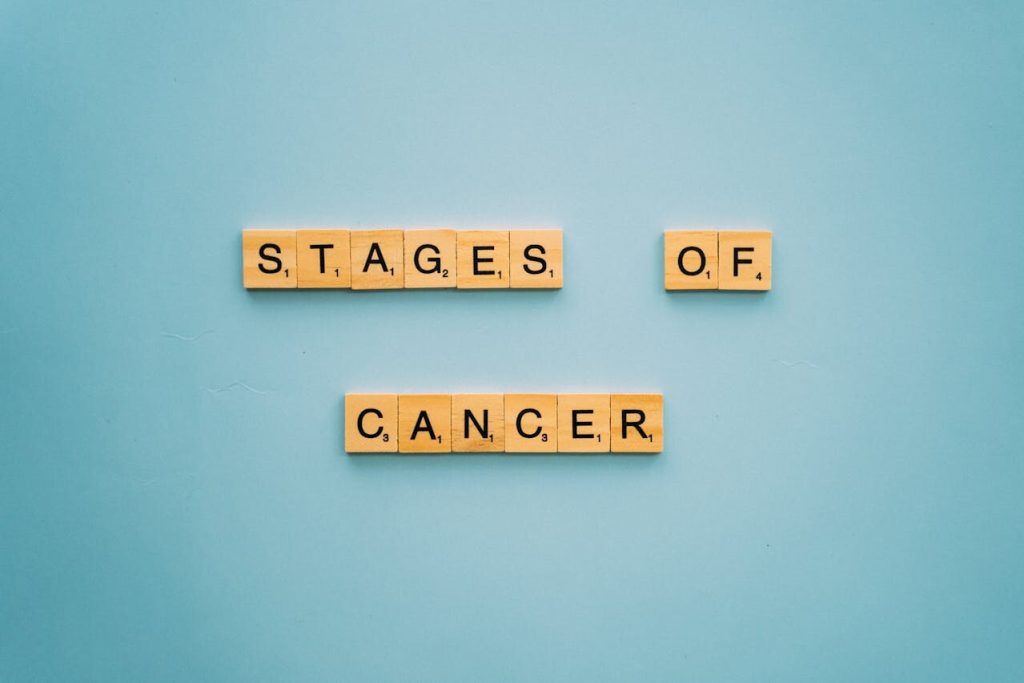Both melanoma and warts are common skin conditions that affect a large number of individuals worldwide. While they may share some similarities, they are distinct in their characteristics, causes, and treatment approaches. This in-depth article highlights the differences between melanoma and warts, provides information on their diagnosis, treatment options, and prevention tips. It also delves into the holistic approach to cancer care offered at the Cancer Center for Healing in Irvine, CA, and the role of early detection in skin cancer awareness.
Key Takeaways
- Melanoma and warts are skin conditions that have distinct characteristics and treatment approaches.
- Early diagnosis is crucial for both melanoma and warts to ensure prompt treatment.
- Treatment options for melanoma include surgery, chemotherapy, radiation therapy, targeted therapy, immunotherapy, and holistic approaches.
- Treatment options for warts include over-the-counter medications, cryotherapy, laser treatment, electrocautery, and topical creams.
- Preventive measures for both melanoma and warts include sun protection, regular skin checks, avoiding direct contact with warts, and maintaining overall skin health.
- The Cancer Center for Healing in Irvine, CA, offers a holistic approach to cancer care that integrates conventional and alternative therapies.
- Early detection is key in skin cancer awareness and prevention.
Understanding Melanoma
Melanoma is a type of skin cancer that develops from the cells that produce pigment in the skin. It is one of the most serious forms of skin cancer and can spread quickly to other parts of the body if left untreated.
Melanoma is caused by damage to the DNA in skin cells, which triggers abnormal growth and division. Certain risk factors, such as excessive sun exposure, use of tanning beds, a history of sunburns, and having multiple moles or atypical moles can increase the risk of developing melanoma.
Symptoms of Melanoma
The most common symptom of melanoma is the appearance of a new mole or a change in an existing mole. Melanomas can also develop as a new, abnormal growth on the skin that is not a mole.
Symptoms of melanoma can include:
- A mole that appears suddenly or begins to grow rapidly
- A mole that changes in size, shape, or color
- A mole that has irregular, ragged, or blurred borders
- A mole that becomes raised or develops a rough surface
- A mole that itches or bleeds
- A new, abnormal growth on the skin
It is important to perform regular self-examinations of the skin and report any concerning changes to a healthcare professional right away.
What Are Warts?
Warts are common skin growths caused by the human papillomavirus (HPV). They are non-cancerous and can occur anywhere on the body, but are most commonly found on the hands, feet, and face. Warts are generally harmless and will often go away on their own, but they can be unsightly and cause discomfort.
There are several types of warts, including:
| Type | Appearance |
|---|---|
| Common warts | Rough, raised bumps with a rough texture and irregular borders |
| Plantar warts | Hard, painful growths on the soles of the feet |
| Genital warts | Small, flesh-colored bumps in the genital area |
Warts are typically diagnosed based on their appearance and medical history. If a wart is causing discomfort or doesn’t go away on its own, a healthcare professional may recommend treatment options such as over-the-counter medications, cryotherapy, laser treatment, electrocautery, or topical creams.
To prevent warts, it is important to avoid direct contact with warts and maintain good overall skin health. If you have a wart, try to avoid touching it as much as possible, and don’t share personal items like towels or razors. Keeping your skin clean and dry can also help prevent the spread of warts to other parts of your body.
Key Differences Between Melanoma and Warts
While melanoma and warts are both skin conditions, they have distinct differences in their appearance, growth patterns, potential for spreading, and associated risks. Melanoma is a type of skin cancer that occurs when skin cells called melanocytes grow uncontrollably and form malignant tumors. On the other hand, warts are non-cancerous growths that are caused by the human papillomavirus (HPV).
One of the key differences in appearance is that melanoma often appears as a dark or black mole, while warts are usually flesh-colored or grayish-brown in color and have a rough surface. Another significant difference is their potential for spreading. Melanoma has a higher risk of metastasis, meaning the cancer cells can spread to other parts of the body, while warts are typically localized to the area where they first appeared.
Diagnosis of Melanoma and Warts
Early diagnosis of melanoma and warts is crucial for effective treatment. While melanoma is diagnosed through a combination of visual examination, dermatoscopy, and skin biopsy, warts are typically diagnosed based on their appearance and medical history. A healthcare professional may use various specialized tools to examine the skin, such as a dermatoscope or a magnifying glass.
A skin biopsy may be required to confirm the diagnosis of melanoma. The biopsy involves removing a small sample of skin tissue for laboratory testing. Depending on the results, additional tests may be necessary, such as a lymph node biopsy or imaging tests.
If you notice any suspicious changes in your skin, such as irregular or asymmetrical moles, new growths, or unusual spots, it’s important to seek medical attention promptly. Your healthcare provider can perform a thorough examination and recommend further testing if necessary.
Treatment Options for Melanoma
When it comes to treating melanoma, there are several options available. The right treatment plan will depend on the stage and severity of the cancer, as well as the patient’s overall health and medical history.
| Treatment Type | Description |
|---|---|
| Surgery | The most common treatment for melanoma, surgery involves removing the cancerous cells and a small margin of healthy tissue surrounding the area. |
| Chemotherapy | A type of drug therapy that uses chemicals to kill cancer cells. It is typically used for advanced or metastatic melanoma. |
| Radiation Therapy | A treatment that uses high-energy radiation to kill cancer cells. It is often used after surgery to destroy any remaining cancer cells. |
| Targeted Therapy | A type of drug therapy that targets specific genes or proteins that help cancer cells grow. It is used for advanced or metastatic melanoma. |
| Immunotherapy | A treatment that uses the body’s immune system to fight cancer cells. It is typically used for advanced or metastatic melanoma. |
| Holistic Approaches | In addition to conventional treatments, holistic approaches such as nutrition, exercise, stress-reduction techniques, and supplement therapy can help support the body’s natural healing abilities. |
At the Cancer Center for Healing in Irvine, CA, patients with melanoma receive individualized treatment plans that are tailored to their unique needs. Dr. Leigh Erin Connealy, MD, specializes in integrative oncology and offers a comprehensive approach to cancer care that combines the best of both conventional and holistic medicine.
Treatment for Warts
Warts are a common skin condition caused by the human papillomavirus (HPV). While they are non-cancerous growths, they can be persistent and bothersome to some individuals. There are various treatment options available for warts, depending on their size, location on the body, and severity.
Over-the-counter medications, such as salicylic acid or duct tape, can be used to treat smaller warts. Cryotherapy, which involves freezing the wart with liquid nitrogen, is a minimally invasive option that may require several treatments. Laser treatment, electrocautery, and topical creams are other options that can be discussed with a healthcare professional.
Prevention Tips for Melanoma and Warts
The best way to prevent skin diseases like melanoma and warts is by taking steps to protect your skin and maintain overall skin health. Here are some practical tips to follow:
- Use sunscreen: Apply a broad-spectrum, water-resistant sunscreen with an SPF of at least 30 before going outside. Reapply every two hours or after swimming or sweating.
- Avoid peak sun hours: Stay out of the sun between 10 a.m. and 4 p.m. when the sun’s rays are strongest.
- Wear protective clothing: Cover your skin with long-sleeved shirts, pants, and hats when possible.
- Perform regular skin checks: Examine your skin from head to toe once a month to detect any changes or abnormalities. If you notice anything suspicious, consult a healthcare professional immediately.
- Avoid direct contact with warts: Do not touch warts, and avoid sharing personal items with people who have warts.
- Maintain overall skin health: Follow a balanced diet, stay hydrated, manage stress, and get enough sleep to promote healthy skin.
Remember, early detection is key to successful treatment. Stay aware of your skin health and seek medical attention if you notice any changes or abnormalities.
Holistic Approach to Skin Cancer Care
The Cancer Center for Healing in Irvine, CA, offers a comprehensive and holistic approach to cancer care under the guidance of Dr. Leigh Erin Connealy.
The center integrates conventional and alternative therapies to address the physical, emotional, and spiritual aspects of healing. The goal is to provide personalized treatment plans for each patient to promote optimal health and well-being.
In addition to conventional treatments such as surgery, chemotherapy, and radiation therapy, the center offers a range of holistic therapies. These include nutritional supplementation, detoxification, mind-body medicine, and energy healing.
At the Cancer Center for Healing, the focus is on treating the whole person rather than just the cancer. The team of experienced practitioners works closely with patients to understand their unique needs and preferences, creating a customized treatment plan that addresses their physical, emotional, and spiritual health.
Patients who choose to receive care at the Cancer Center for Healing can expect to receive comprehensive, personalized care that supports their overall health and well-being in addition to treating their cancer.
To learn more about the center’s holistic approach to skin cancer care or to schedule a consultation with Dr. Connealy, please visit the center’s website or contact their office directly.
Skin Health and Overall Well-being
Good skin health is not only important for aesthetics but also for overall well-being. The skin is the body’s largest organ and plays a crucial role in protecting internal organs. Maintaining healthy skin can also prevent various skin conditions, including melanoma and warts.
One of the key aspects of skin health is sun protection. Overexposure to the sun’s harmful UV rays can damage the skin and increase the risk of skin cancer. It’s essential to wear protective clothing and sunscreen when spending time outdoors, especially during peak sun hours.
Stress management is another important element of skin health. Chronic stress can lead to various skin conditions, including acne, eczema, and psoriasis. Practicing stress-reducing activities like meditation, yoga, and deep breathing can help improve skin health and overall well-being.
The food we eat also plays a significant role in skin health. A diet rich in nutrients like vitamins A, C, and E, and antioxidants can help nourish the skin and reduce the risk of skin damage. It’s essential to consume a balanced diet with plenty of fruits, vegetables, whole grains, and lean protein to maintain healthy skin.
The Role of Early Detection
Early detection is crucial for effective management of both melanoma and warts. Regular skin checks and self-examinations can help detect any changes or abnormalities in the skin’s appearance. Early detection of melanoma can increase the chances of successful treatment and reduce the risk of spreading to other parts of the body. In addition, prompt treatment of warts can prevent them from spreading to other areas of the skin or to other people.
It is essential to be aware of the common signs and symptoms of both melanoma and warts. Any changes in moles or skin growths, such as irregular borders, variation in color, and asymmetry, should be assessed by a healthcare professional. If warts are present, they may appear as rough-textured growths, possibly with a raised appearance and occasional pain or discomfort.
Public awareness campaigns have played a significant role in educating people about skin cancer, including melanoma, and the importance of early detection. The American Cancer Society recommends performing self-examinations of the skin every month and having a healthcare professional evaluate any suspicious skin abnormalities.
If any changes or abnormalities are observed, it is crucial to seek medical attention promptly. Early diagnosis and prompt treatment can improve the chances of successful management of both melanoma and warts. A healthcare professional can offer tailored advice and recommend appropriate treatment options for a specific condition, depending on its severity and stage of progression.
Conclusion
Melanoma and warts are two common skin conditions that require different diagnosis and treatment approaches. While melanoma is a type of skin cancer, warts are non-cancerous growths caused by the human papillomavirus (HPV). Early diagnosis and treatment are crucial for both conditions to prevent potential complications.
Regular skin checks and self-examinations are essential for detecting any abnormalities or changes in the skin’s appearance. Professional medical advice should be sought if any skin growth or lesion persists or causes discomfort.
The Cancer Center for Healing in Irvine, CA, offers a comprehensive and holistic approach to cancer care, integrating conventional and alternative therapies. Dr. Leigh Erin Connealy’s expertise and personalized treatment plans provide patients with optimal care and support in their healing journey.
Preventive measures such as sun protection, a healthy lifestyle, and stress management can also promote skin health and overall well-being. Skin cancer awareness campaigns and early detection efforts can save lives and improve the quality of life for those affected.
Stay informed, take care of your skin, and seek professional help if you notice any changes or abnormalities. Remember that early detection and treatment can prevent potential complications and improve your chances of a full recovery.
FAQ
Q: What are the main differences between melanoma and warts?
A: Melanoma is a type of skin cancer, while warts are non-cancerous growths. Melanoma has the potential to spread to other parts of the body, while warts typically remain localized. Additionally, melanoma often presents as a change in an existing mole or the appearance of a new, unusual growth, while warts are characterized by rough texture and raised appearance.
Q: How are melanoma and warts diagnosed?
A: Melanoma is diagnosed through visual examination, dermatoscopy, and skin biopsy. Warts are typically diagnosed based on their appearance and medical history.
Q: What are the treatment options for melanoma?
A: Treatment options for melanoma include surgery, chemotherapy, radiation therapy, targeted therapy, immunotherapy, and holistic approaches. The Cancer Center for Healing in Irvine, CA, offers comprehensive treatment modalities under the guidance of Dr. Leigh Erin Connealy. For more information, please contact the center to schedule a consultation.
Q: How are warts treated?
A: Warts can be treated with over-the-counter medications, cryotherapy, laser treatment, electrocautery, and topical creams. It is advisable to seek professional advice for persistent or bothersome warts.
Q: What are some prevention tips for melanoma and warts?
A: To prevent melanoma and warts, it is recommended to practice sun protection, perform regular skin checks, avoid direct contact with warts, and maintain overall skin health. Following a healthy lifestyle and consulting a healthcare professional for personalized guidance are also important.
Q: What is the holistic approach to skin cancer care?
A: The Cancer Center for Healing in Irvine, CA, offers a comprehensive and holistic approach to cancer care under the expertise of Dr. Leigh Erin Connealy. This approach integrates conventional and alternative therapies to address the physical, emotional, and spiritual aspects of healing, with personalized treatment plans.
Q: How does skin health impact overall well-being?
A: Skin health is closely interconnected with overall well-being. Maintaining a healthy lifestyle, managing stress, and nourishing the body can positively impact the skin’s condition and reduce the risk of skin diseases like melanoma and warts.
Q: What is the role of early detection in melanoma and warts?
A: Early detection is crucial in both melanoma and warts. Regular skin checks and awareness of skin abnormalities can lead to early diagnosis and prompt treatment, which can improve outcomes and reduce the potential for complications.






